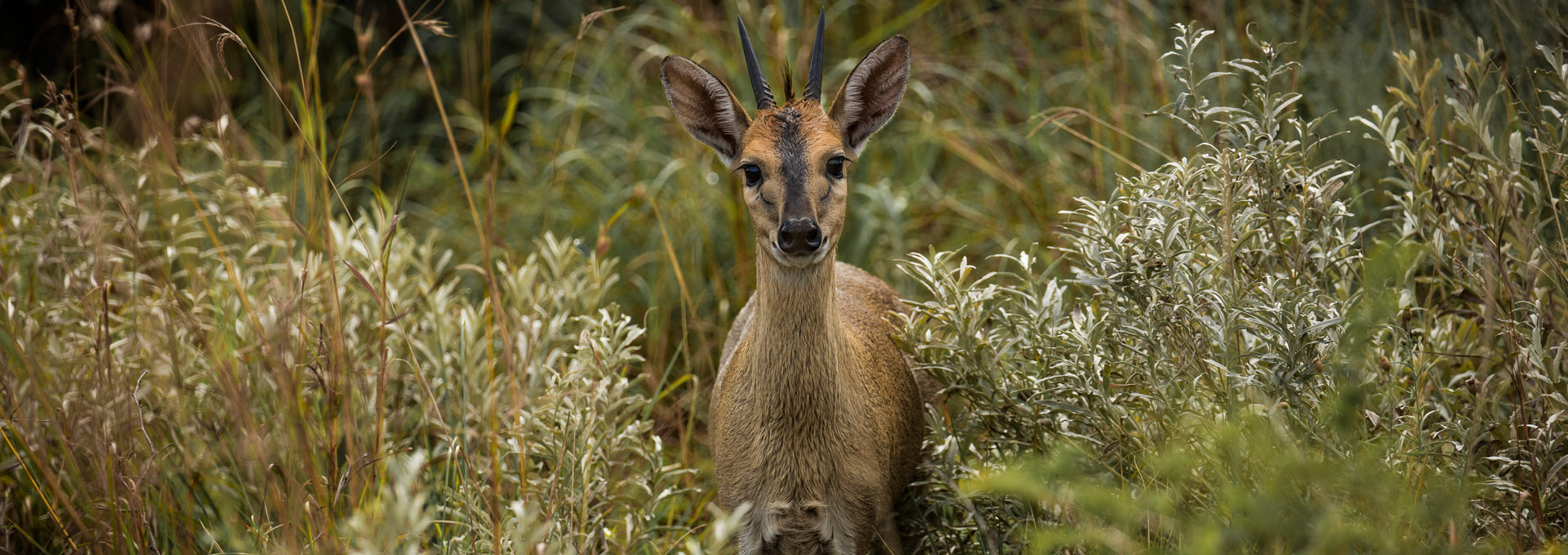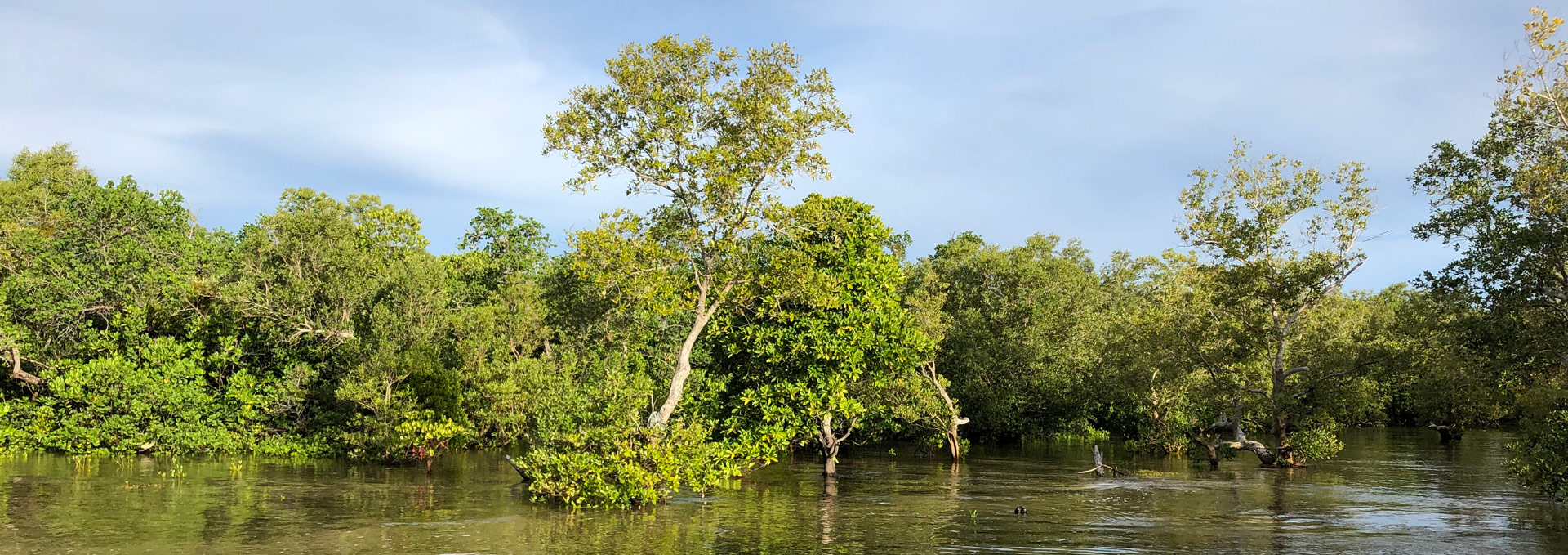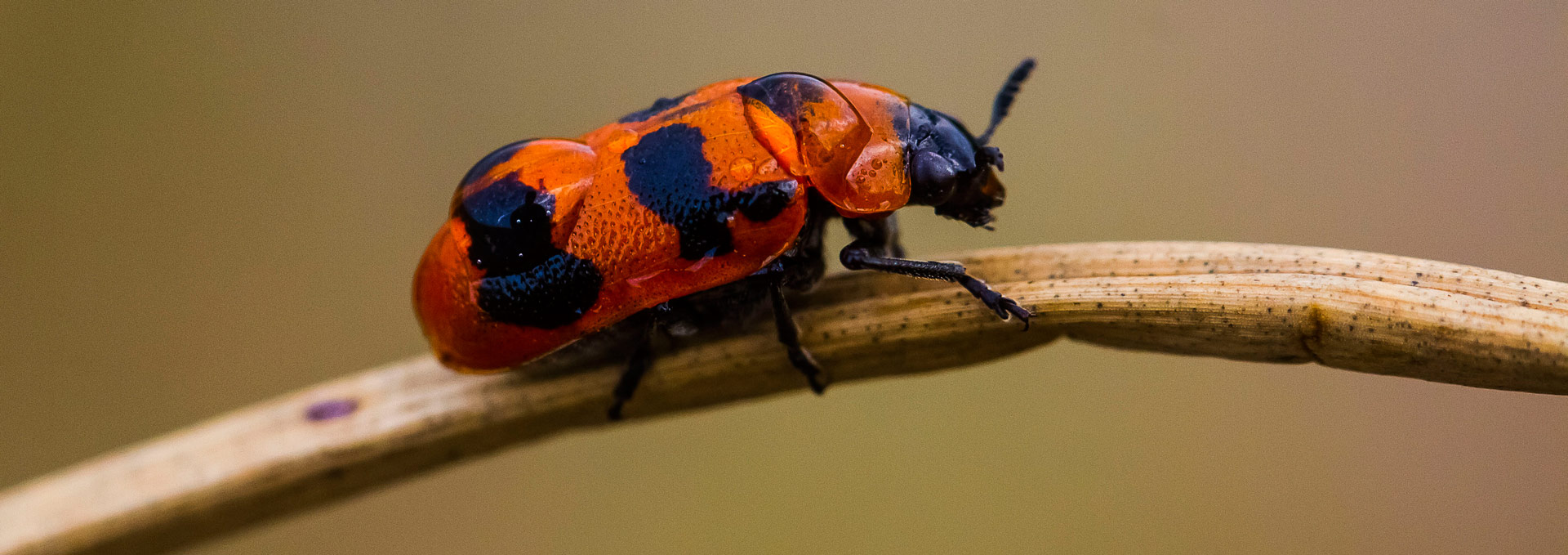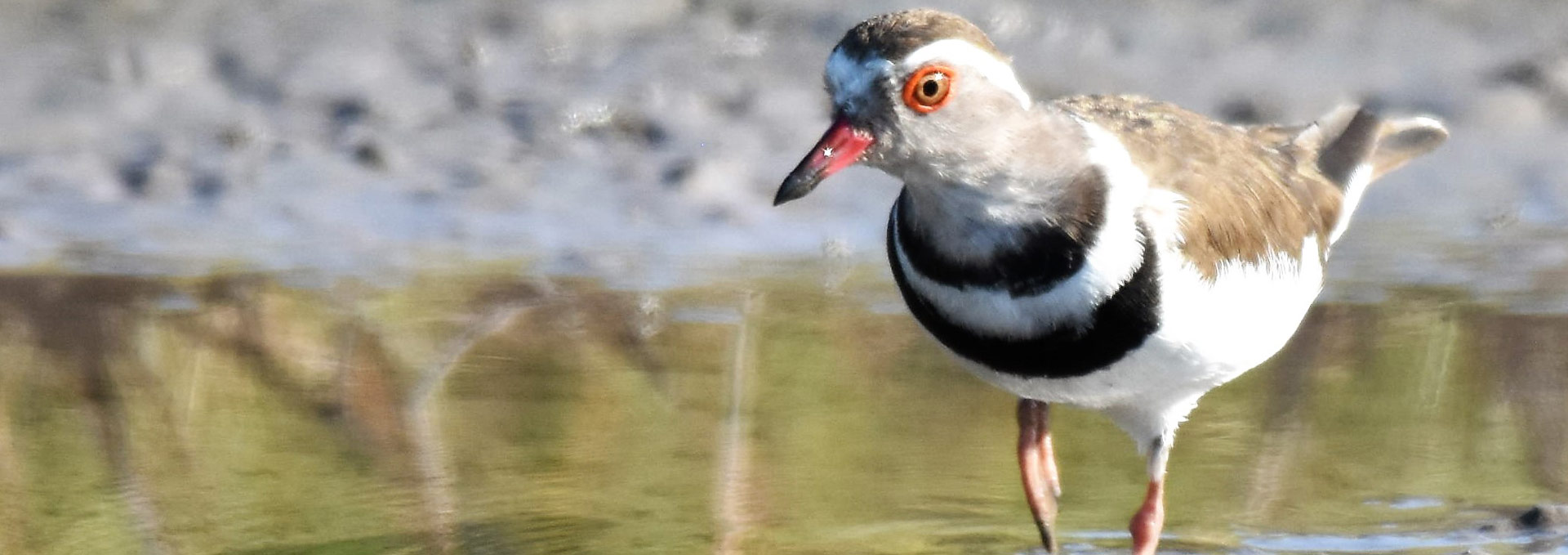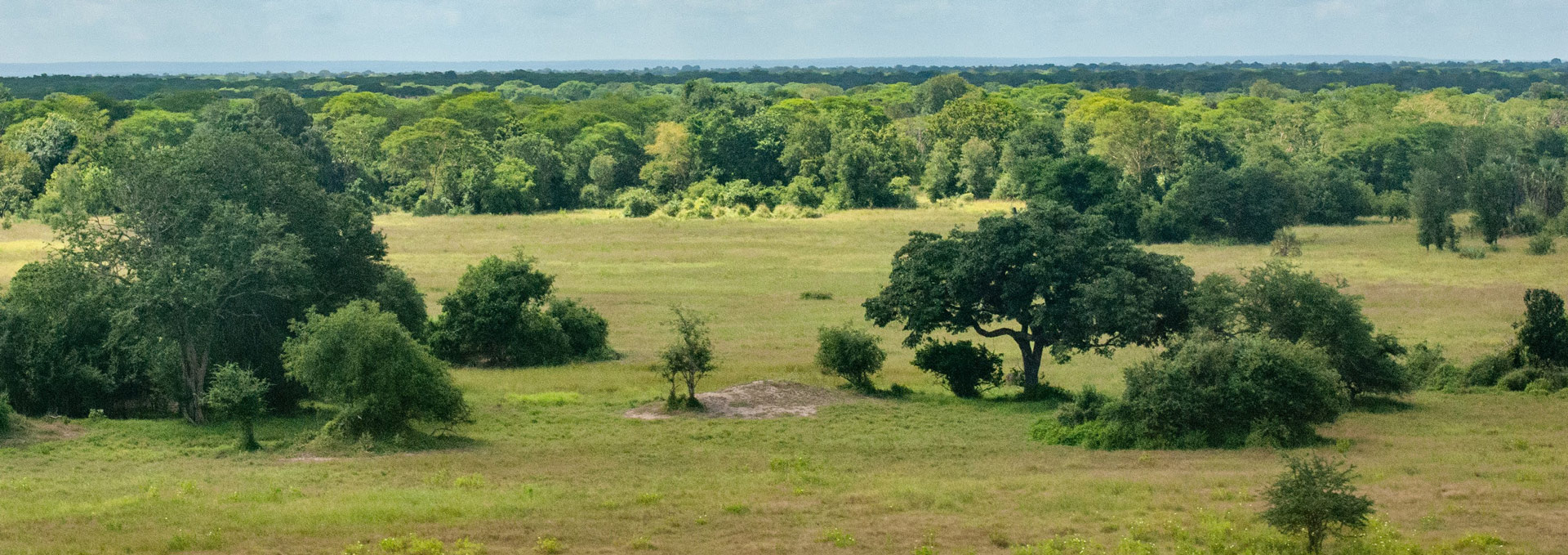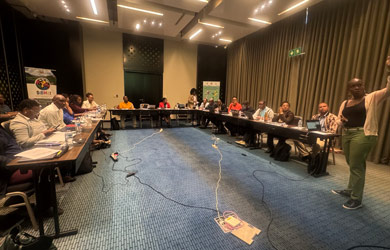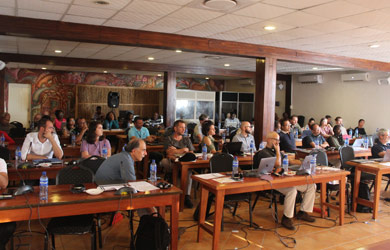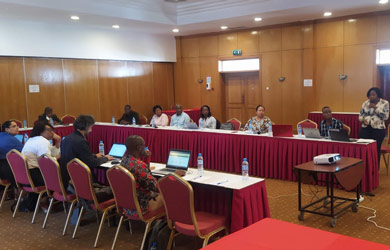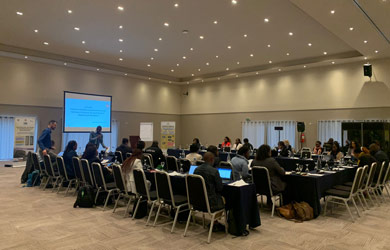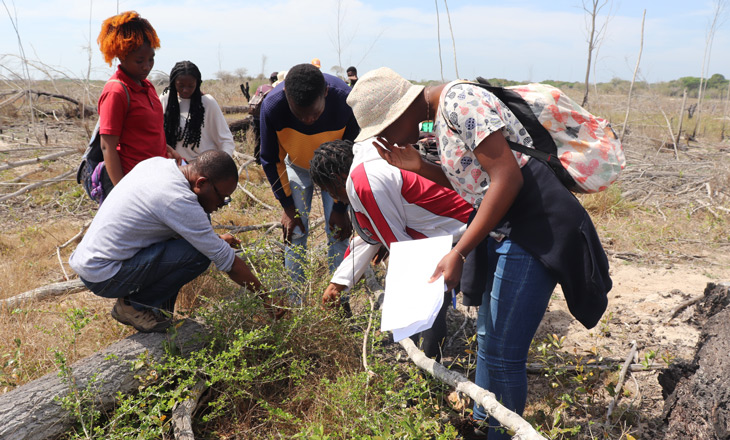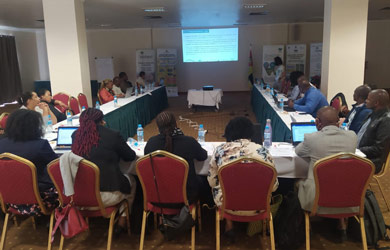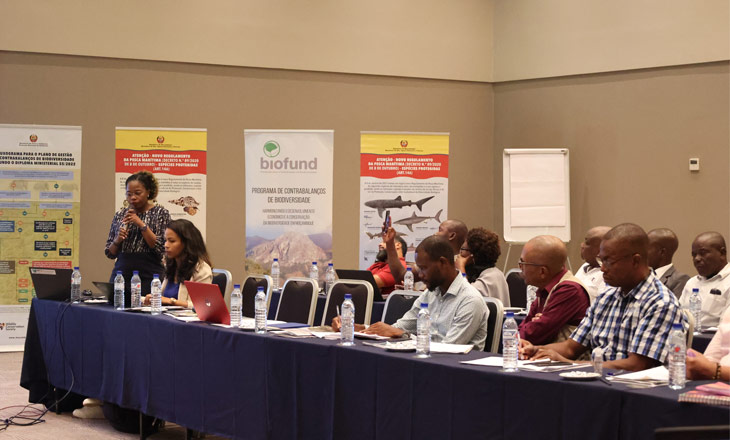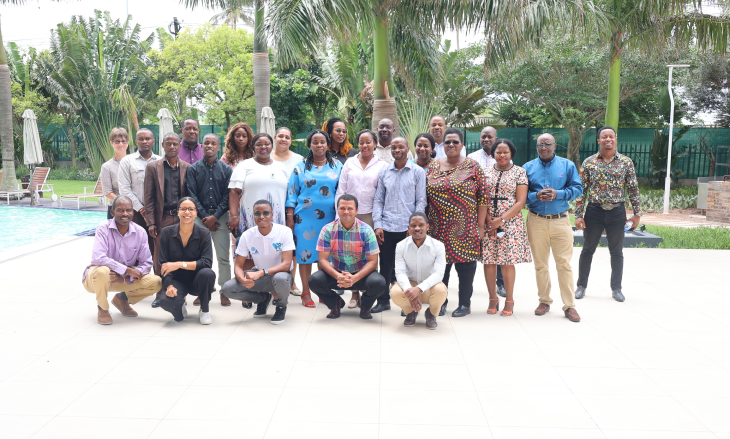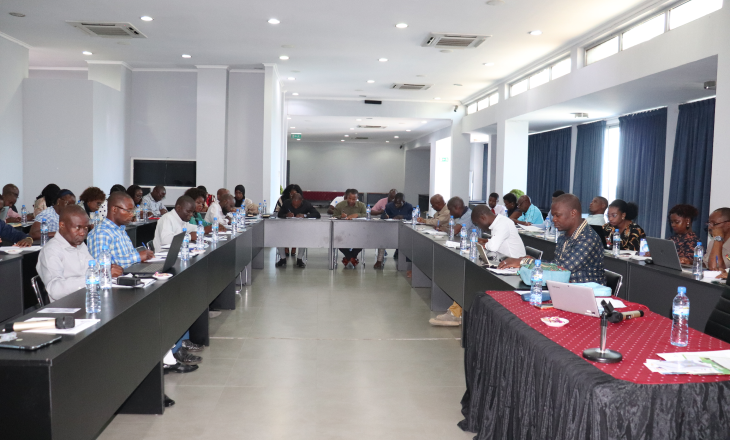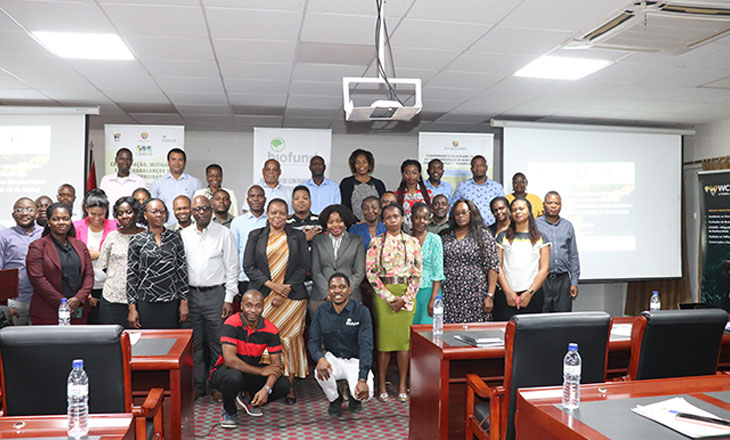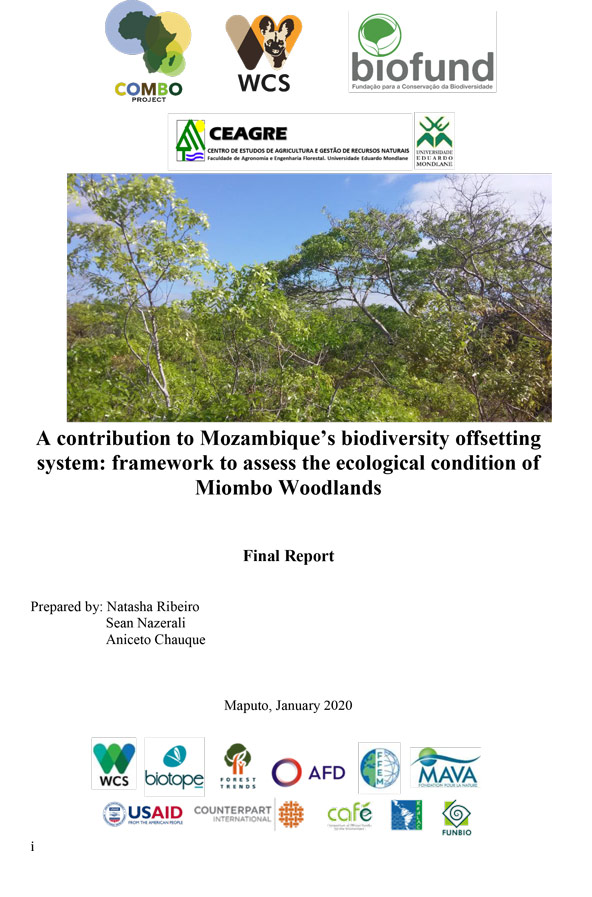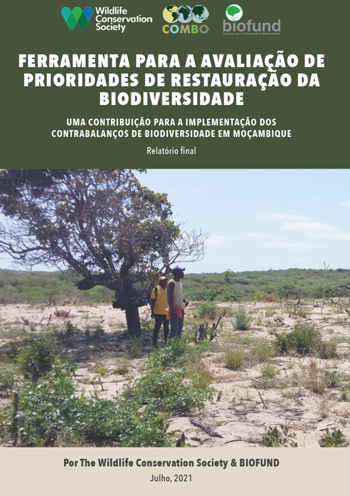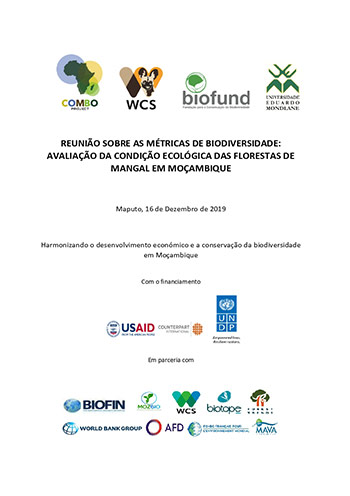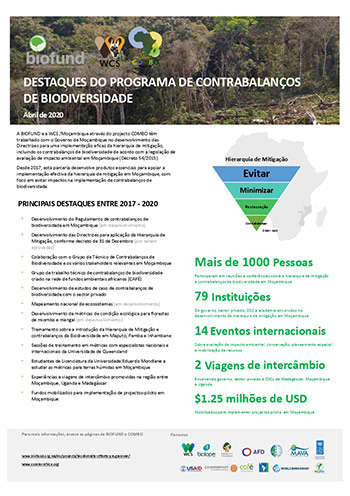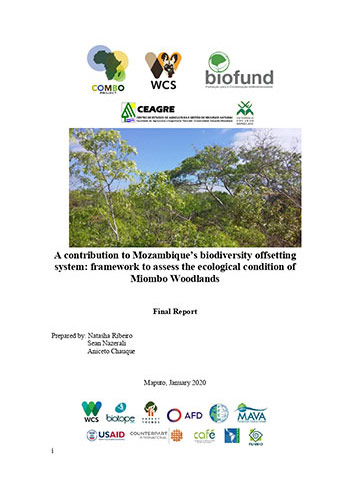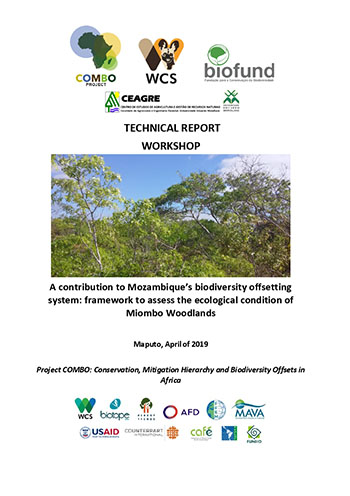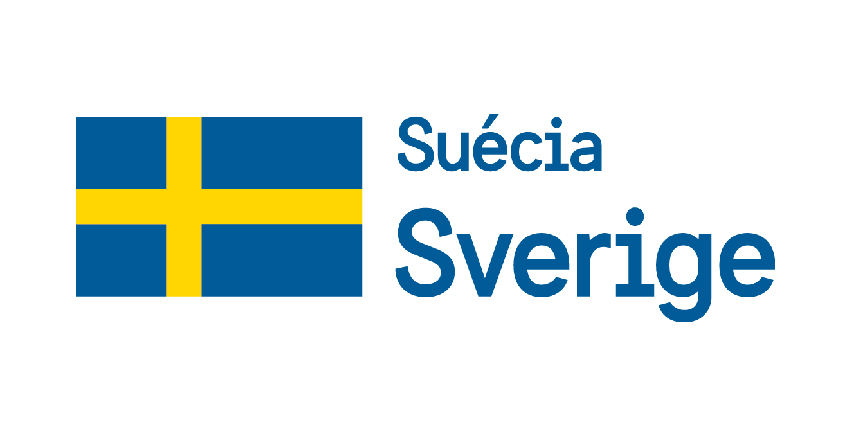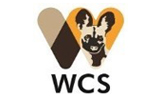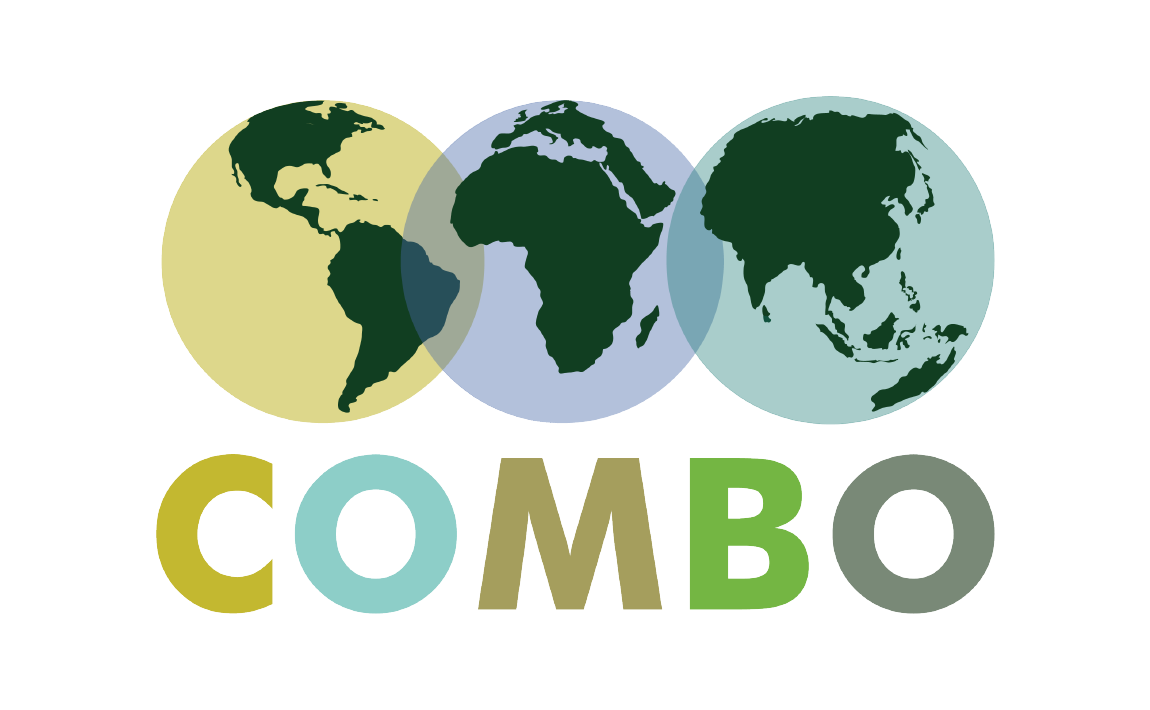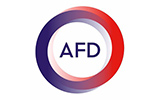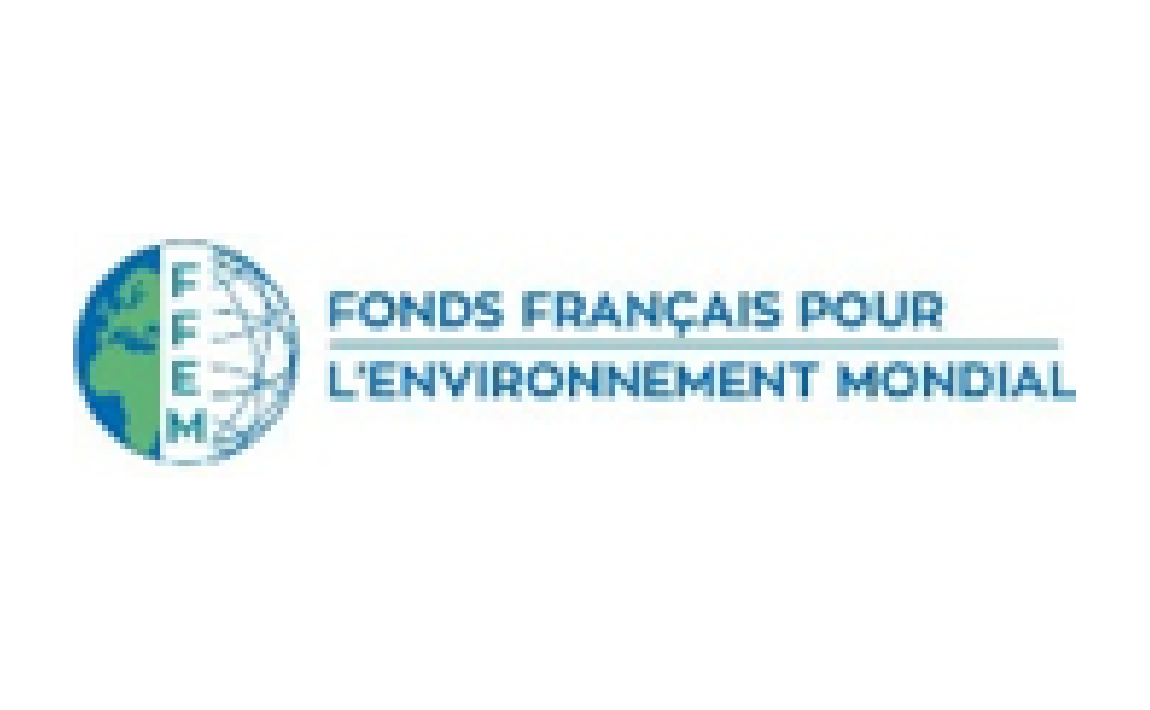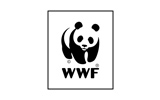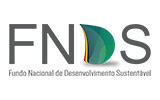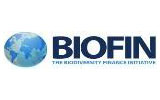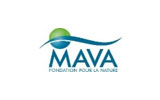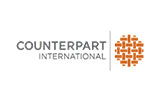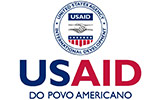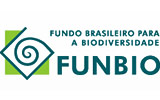Updated at 25/04/2025
Context of the implementation of the mitigation hierarchy in Mozambique
Given the increased exploitation of natural resources in Mozambique over the past decade, with a simultaneous rapid increase in negative environmental and social impacts, there is an urgent need to reconcile economic development and the conservation of biodiversity and ecosystem services, on which the majority of Mozambican population depends for its livelihood.
A promising approach is expressed in the balance of impacts on biodiversity resulting from development projects, and the measures taken to avoid and minimise these impacts, to ensure restoration at project site, and finally, if there are non-negligible significant impacts, to offset such impacts, by producing measurable conservation results in an appropriate geographical scale (for example, local, landscape level, national and/or regional). This approach is based on the adequate application of the mitigation hierarchy, which proponents of category A / A + development projects are required to follow in accordance with the Environmental Impact Assessment Regulation 54/2015 of 31 December.
The main objective of the application of the mitigation hierarchy is to achieve No Net Loss (NNL) and preferably to obtain a Net Gain (NG) of Biodiversity in relation to species composition, habitat structure, function of the ecosystem and of the use of people and cultural values associated with biodiversity, in a different area from the impact site.
No Net Loss (NNL) means it is assumed that some important biodiversity will be lost due to the development of a project in a particular place and period of time, but that equivalent biodiversity will be gained somewhere else, in the same or greater quantity and quality, compared to which existed before the project and the biodiversity offset management plan.
Net Gain (GL) of biodiversity when the gains resulting from adequate implementation of the mitigation hierarchy exceed the losses.
Currently, the Government of Mozambique is developing specific legal instruments to regulate the implementation of biodiversity offsets in Mozambique.

+100 Countries
Currently, the Government of Mozambique is developing specific legal instruments to regulate the implementation of biodiversity offsets in Mozambique.

+4.8 Billion, USD
Currently, the Government of Mozambique is developing specific legal instruments to regulate the implementation of biodiversity offsets in Mozambique.

+50 Billion, USD
Currently, the Government of Mozambique is developing specific legal instruments to regulate the implementation of biodiversity offsets in Mozambique.
The Biodiversity Offsets Program
There has been a growing involvement of the Environmental Funds in biodiversity offset schemes worldwide. Since 2017, BIOFUND has been implementing the Biodiversity Offsets Programme with the main objective of supporting the Government of Mozambique in creating a legal, technical and financial enabling environment for an effective implementation of the mitigation hierarchy in Mozambique.
This programme is part of the strategic actions of BIOFUND to explore innovative financing mechanisms to support conservation of biodiversity in Mozambique. In this context, BIOFUND has been collaborating with the Government of Mozambique, WCS through the COMBO+ program, civil society, academia, and private sector to define appropriate mechanisms to implement an aggregate system of biodiversity offsets following the principles laid down in the RoadMap for achieving Biodiversity Offsets in Mozambique designed by the World Bank in 2016.
The mitigation hierarchy and the biodiversity offsets are considered as an additional financial mechanism to support the conservation of biodiversity in Mozambique in the BIOFUND Strategic Plan 2018-2022.
Videos
BIOFUND Video sobre Hierarquia de Mitigação e Contrabalanços de Biodiversidade
Troca de experiência entre o programa Combo+ e a Portucel Moçambique
BIOFUND | Contrabalanços de Biodiversidade 2018
Objectives
The biodiversity offsets programme has as its main strategic objectives:
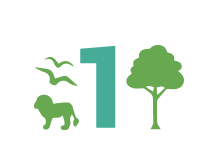
To contribute to the inclusion of the mitigation hierarchy and biodiversity offsets in specific policies
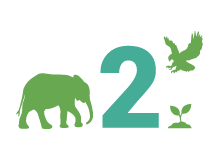
To develop the internal technical and institutional capacity to serve as a financial mechanism for biodiversity offset projects
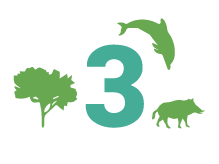
To promote multi-sector training and exchange of experiences at national and international level about applying the mitigation hierarchy and biodiversity offsets
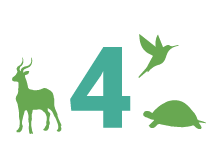
To contribute for the effective implementation of biodiversity offset pilot projects in the country
Outcomes

2
LEGAL DIPLOMA
Biodiversity Offsets Diploma approved

+1500
PEOPLE
Participated in meetings and conferences on mitigation hierarchy and biodiversity offsets in Mozambique

200
INSTITUTIONS
From the government, private sector, CSOs, and academia involved in developing the mitigation hierarchy in Mozambique

30
INTERNATIONAL EVENTS
On environmental impact assessment, conservation, spatial planning and fundraising

3
EXPERIENCE EXCHANGE VISITS
Involving government, private sector and CSOs of Madagascar, Mozambique and Uganda

+2.5
MILLION USD
Mobilised to implement pilot projects in Mozambique
Videos on Impact Mitigation and Ecological Offsetting
These nine (9) videos published by the Thematic Group on Impact Mitigation and Ecological Compensation (IMEC), part of the IUCN Commission on Ecosystem Management, present the concept and main challenges related to the implementation of biodiversity offsets and ecological compensation in plain language. They were produced by offsets specialists from the IMEC Thematic Group, the University of Queensland, RMIT University, The University of Melbourne and University of Helsinki with the support of funding from the Australian Government’s National Environmental Science Program through the Threatened Species Recovery Hub.
Context of biodiversity offsets Under what circumstances can we counterbalance biodiversity? How is biodiversity characterized and quantified for the purpose of biodiversity offsets How to estimate gains from a biodiversity offset Adjusting gain estimates from a biodiversity offset Define restrictions and requirements to help make biodiversity offsets more effective Coordinate biodiversity offset actions for greater benefits An approach that aligns compensation with conservation goals Acompanhamento do desempenho de contrabalanços individuais e programas de contrabalanços de biodiversidade









News
Publications
Partners
The main partners of the Program are the COMBO+ Program implemented by the Wildlife Conservation Society (WCS), the Government of Mozambique represented by the Ministry of Land Environment (MTA), the MozBio 2 Project financed by the World Bank, the BIOFIN and BIOSFAC Projects of the United Nations Development Program (UNDP) and the Biodiversity Conservation and Community Development (CBDC) Project supported by the French Development Agency (AFD) and French Fund for the Environment (FFEM).
Government of Mozambique, represented by the Ministry of Land and Environment – National Directorate for the Environment is the entity legally responsible for implementing the Mitigation Hierarchy including Biodiversity Offsets in Mozambique according to Decree 54/0215.
The COMBO+ Program supports progress towards national and global biodiversity targets by contributing to the definition and implementation of policies aimed at achieving No Net Loss, or preferably a Net Gain, in biodiversity. The COMBO partnership is led by the Wildlife Conservation Society (WCS), working closely with Biotope, Guinée Ecologie, BIOFUND, and other national partners in the program’s focal countries of Guinea, Lao PDR, Madagascar, Mozambique, Myanmar and Uganda. COMBO is currently funded by the Agence Française de Developpement (AFD) and the Fonds Français pour l’Environnement Mondial (FFEM), with co-financing from other donors, including NORAD.
MozBio 2 Project is an initiative implemented by the National Fund for Sustainable Development (FNDS) with financial support from the World Bank, which aims to increase the effectiveness of the management of conservation areas and improve the living conditions of resident communities.
UNDP BIOSFAC Project is an initiative that aims to promote the diversification of ecosystem goods and services for financial sustainability and wildlife management in conservation areas in Mozambique.
UNDP BIOFIN Project is a global initiative that seeks to develop innovative financial mechanisms in Mozambique to improve funding for biodiversity conservation. The main institutions for implementing the BIOFIN process in Mozambique are the Ministry of Land, Environment and the Ministry of Economy and Finance.
Biodiversity Conservation and Community Development Project (CBDC) launched in 2020 and implemented by ANAC, BIOFUND and MICAIA with financial support from the French Development Agency (AFD) through the French Fund for the Environment (FFEM) aims to contribute to the conservation of the biodiversity and ensure the sustainable development of communities in the Chimanimani National Park.
The Program collaborates with other key civil society stakeholders including government institutions, the private sector, academia, and non-governmental organizations to ensure the correct implementation of the Mitigation Hierarchy in Mozambique.
Training on Application of Mitigation Hierarchy in Mozambique: Procedures to achieve No Net Loss or Net Gain of Biodiversity
To subscribe click here

